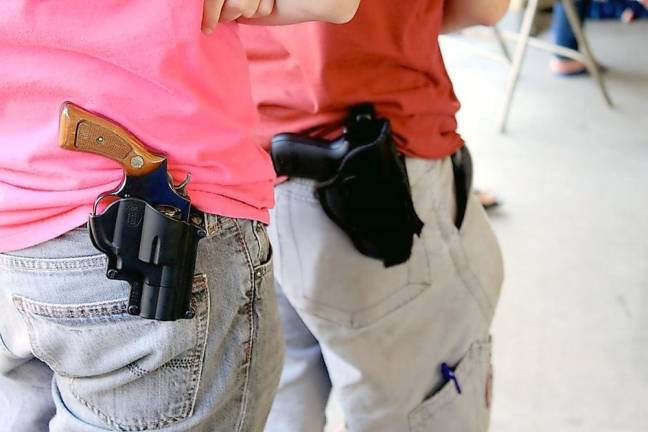Open carry and voter intimidation: What does PA law say?
Milford. Election day is Nov. 3. Open carry is allowed in polling places in Pennsylvania, but gun brandishing is not allowed.

There is no law in Pennsylvania that prohibits the open carry of firearms in polling places, except for those located in a school. Firearms are not allowed in schools in Pennsylvania except when carried by security personnel, such as school police officers, school resource officers, and school security guards.
There is no law in Pennsylvania that prohibits the open carry of a firearm in church unless the church also houses a school, grades from K through 12, recognized by the Pennsylvania Department of Education.
In Pike County, none of the polling places for the Nov. 3 general election is located in a school.
Voter intimidation is against the law. According to the Pennsylvania Department of State: “Any activity that threatens, harasses or intimidates voters outside the polling place or inside the polling place is illegal. This includes any activity intended to, or having the effect of, interfering with any voter’s right to vote.” See list below for examples of violations.
Each county board of elections is required to investigate alleged violations and report them to the district attorney, who has the authority to prosecute violations. Witnesses to intimidation may call the Pike County Board of Elections at 570-296-3427, and should also report these incidents to the Department of State at 1-877-VOTESPA (1-877- 868-3772).
You can watch the counting of absentee and mail-in ballots on YouTube. The Pike County Board of Elections will meet in the Commissioners Conference Room in the Administration Building 506 Broad St. in Milford beginning at 7 a.m. on Tuesday, Nov. 3, to publicly commence the canvassing and scanning these ballots. This process will be live streamed to the county’s YouTube channel.